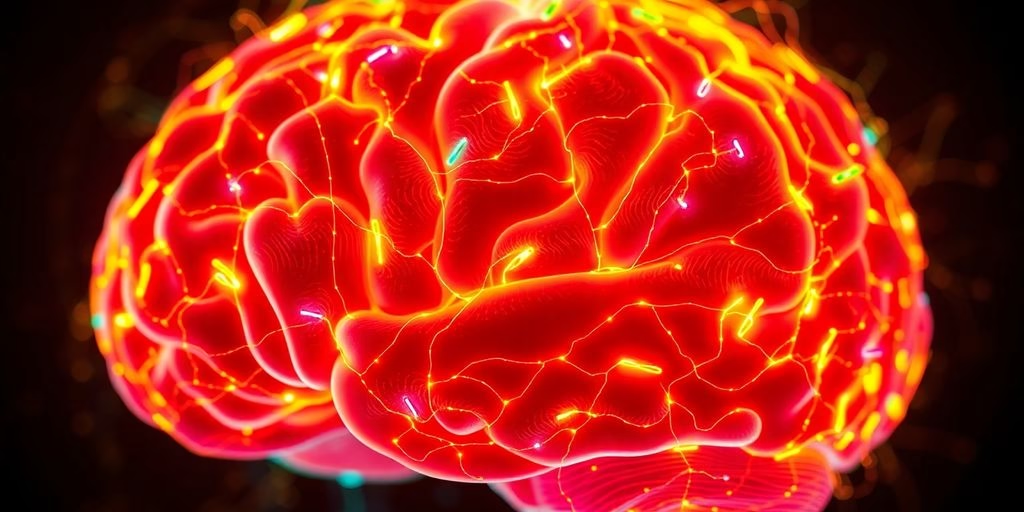ADHD can be tricky to figure out, right? Lots of people wonder what actually counts as ADHD according to the official rulebook. We’re going to look at the ADHD DSM criteria, which is basically the standard guide doctors use. It breaks down what signs to look for and how to tell if it’s really ADHD or something else. Let’s get into it.
Key Takeaways
- The ADHD DSM criteria sorts symptoms into two main groups: not paying attention and being overly active or impulsive.
- To get a diagnosis, symptoms need to have started early, usually before age 12, and be present for a while.
- It’s not just about having symptoms; they also have to cause real problems in daily life, like at school, work, or with relationships, to meet the ADHD DSM criteria.
Core Symptoms of ADHD: Inattention and Hyperactivity

Attention-Deficit/Hyperactivity Disorder (ADHD) is characterized by a persistent pattern of inattention and/or hyperactivity-impulsivity that interferes with functioning or development. At Polished Mind Psychiatry, we see many individuals across Texas, Washington, California, Iowa, and New York who are trying to understand these core symptoms better. It’s not just about being a bit forgetful or restless; the DSM-5 criteria outline specific behaviors that help clinicians make a diagnosis.
Understanding Inattentive Symptoms in ADHD
When we talk about inattention in ADHD, it’s more than just daydreaming. It’s a consistent difficulty in focusing on tasks, organizing activities, and following through on instructions. For many people, especially adults, this can be the primary way ADHD shows up. It might look like:
- Difficulty sustaining attention: Trouble staying focused during lectures, conversations, or long periods of reading. You might find your mind wandering frequently.
- Appearing not to listen: Even when spoken to directly, it can seem like the person isn’t processing the information. This isn’t intentional; it’s a struggle with internal attention regulation.
- Trouble organizing tasks and activities: This can manifest as messy work, poor time management, and difficulty meeting deadlines. Projects might be started but rarely finished.
- Losing things necessary for tasks: Constantly misplacing keys, phones, important papers, or tools needed for a job or hobby.
- Being easily distracted: External stimuli, like background noise or visual clutter, can easily pull focus away from the intended task.
- Forgetfulness in daily activities: Forgetting appointments, paying bills, or returning calls. This can impact personal relationships and responsibilities.
It’s important to remember that these symptoms must be present in multiple settings and cause significant impairment. For example, if someone only struggles with paying attention at work but is perfectly focused at home, it might not meet the diagnostic threshold for ADHD.
Recognizing Hyperactive and Impulsive Behaviors
Hyperactivity and impulsivity are the other major symptom clusters associated with ADHD. While often associated with children, these behaviors can persist into adulthood, though they may present differently. At Polished Mind Psychiatry, we help clients in TX, WA, CA, IA, and NY identify these patterns in their lives.
Hyperactivity often involves excessive physical movement. This can include:
- Fidgeting or squirming: Restlessly moving hands or feet, or shifting in seats.
- Leaving seat: Getting up from a seat when remaining seated is expected, like in a classroom or meeting.
- Running or climbing excessively: In children, this can be very noticeable. In adults, it might translate to feeling restless or an inability to sit still for extended periods.
- Inability to play or engage in leisure activities quietly: Difficulty participating in calm activities without being noisy or disruptive.
Impulsivity, on the other hand, relates to acting without thinking. This can lead to:
- Blurting out answers: Interrupting others or finishing their sentences before they are done.
- Difficulty waiting turn: Struggling to wait in line or for their turn in games or conversations.
- Interrupting or intruding on others: Butting into conversations, games, or activities without invitation.
The key to diagnosis isn’t just experiencing these behaviors, but their frequency, intensity, and the degree to which they disrupt daily life. What might be a minor annoyance for one person can be a significant barrier for another.
If you recognize these patterns in yourself or a loved one and they are impacting your daily life, it might be time to seek a professional evaluation. You can book an appointment with us through our appointment page.
Applying the ADHD DSM Criteria for Diagnosis

So, you’ve read about the symptoms of inattention and hyperactivity. That’s a good start, but how does a diagnosis actually happen? It’s not just about noticing a few things here and there. The Diagnostic and Statistical Manual of Mental Disorders (DSM) lays out specific guidelines that clinicians use. For us here at Polished Mind Psychiatry, understanding these criteria is key to helping our patients in Texas, Washington, California, Iowa, and New York get the support they need.
Age of Onset and Persistence of Symptoms
One of the first things a professional looks at is when these behaviors started. The DSM-5, which is the current standard, says that for a diagnosis of ADHD, several inattentive or hyperactive-impulsive symptoms must have been present before age 12. This isn’t about a bad day or a rough week; it’s about a pattern of behavior that’s been around for a while. Think about it – were these traits noticeable when you were a kid, even if they weren’t labeled as ADHD back then? This historical perspective is really important.
- Symptoms must have been present before age 12.
- The pattern needs to be consistent over time, not just occasional.
- Information often comes from parents, teachers, or even self-reports from childhood.
It’s easy to look at current struggles and assume they’re new, but ADHD symptoms often have roots in earlier development. Pinpointing that onset helps paint a clearer picture of the condition.
Impact on Functioning and Impairment
Just having symptoms isn’t enough for a diagnosis. The DSM requires that these symptoms cause significant impairment in daily life. This means they interfere with how a person functions at school, work, or in social situations. It’s about the impact these behaviors have. For example, someone might be forgetful (inattention), but if it doesn’t really affect their job or relationships, it might not meet the criteria for ADHD. However, if that forgetfulness leads to missed deadlines, forgotten appointments, or losing important items regularly, then it’s causing impairment.
Here’s a look at how impairment can show up:
- Academic/Work: Difficulty completing tasks, poor organization, trouble following instructions, procrastination.
- Social: Interrupting others, difficulty waiting turns, trouble maintaining friendships due to impulsivity or inattention.
- Daily Living: Forgetting chores, misplacing keys or wallet, difficulty managing time, problems with emotional regulation.
The key is that the symptoms must cause clear problems in at least two different areas of life. This could be home and school, or work and social settings.
If you’re in Texas, Washington, California, Iowa, or New York and think you or someone you know might be experiencing ADHD, it’s important to get a professional evaluation. Our team at Polished Mind Psychiatry is here to help. You can book an appointment to discuss your concerns and learn more about the diagnostic process.
Understanding how ADHD is diagnosed using the DSM criteria can be really helpful. It’s all about looking at specific signs and how they affect daily life. If you’re curious to learn more about the diagnostic process, check out our website for clear explanations. We can help you understand the steps involved.
Wrapping Up Our Look at ADHD Criteria
So, we’ve gone through the main points of the ADHD criteria as laid out in the DSM. It’s a lot to take in, and understanding these details is the first step. Remember, these guidelines are tools for professionals to help figure out if someone might have ADHD. If you’re wondering about yourself or someone you know, talking to a doctor is the best way to get clear answers. At Polished Mind Psychiatry, we’re here to help with that. We offer personalized care and telehealth, making it easier to get the support you need. You can book an appointment with us anytime at Polished Mind Psychiatry. We’re proud of our 5-star reviews and look forward to helping you.
Frequently Asked Questions
What exactly is ADHD?
ADHD, or Attention-Deficit/Hyperactivity Disorder, is a condition that affects how well someone can pay attention, control their actions, and manage their energy levels. It’s not just about being a little restless; it involves specific patterns of behavior that can make daily life challenging.
How do doctors decide if someone has ADHD?
To be diagnosed with ADHD, a person needs to show a certain number of specific signs of not being able to focus or being overly active and impulsive. These signs must have been present before a certain age, usually around 12, and they need to cause real problems in different areas of life, like school, work, or relationships, not just in one place.
Can ADHD look different in different people?
Yes, ADHD can look different in different people. Some individuals struggle more with staying focused and organized, while others are more physically active and impulsive. Sometimes, people might have a mix of both. It’s important to remember that ADHD is a spectrum, and symptoms can change over time.




